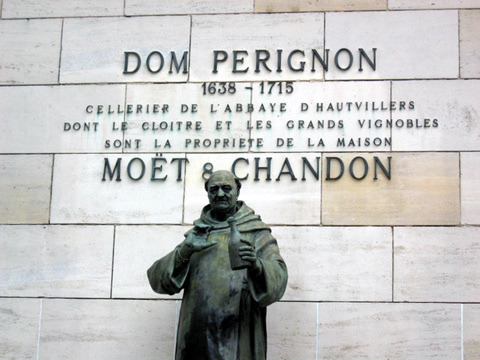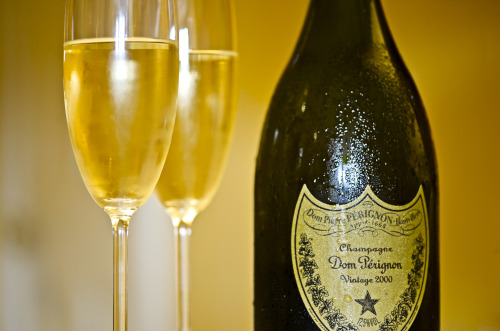Dom Perignon, the man who did not invent champagne,Dom Perignon champagne is recognized as among the
Dom Perignon, the man who did not invent champagne,Dom Perignon champagne is recognized as among the best and rarest champagne in the world. Using the highest quality standards, Dom Perignon is only bottled with vintage champagnes, meaning they only bottle champagne made from grapes that have had a very good harvest. As a result it is a very rare Dom Perignon vintages even share consecutive years. Thus a bottle of Dom Perignon can cost anywhere from a few hundred to several thousand dollars depending on year. Dom Perignon was named after one Dom Perignon, a Benedictine monk who lived in the 17th century. Dom Perignon is famous in French history for creating a set of standards for making the finest quality wines. However a myth has arisen that Dom Perignon was the man who discovered and pioneered champagne. In an incredible historical irony, Dom Perignon not only did not pioneer champagne but tried his darndest to ensure that none of his fine wines had a single bubble.In the 16th and 17th century the creation of sparkling wine was considered an accident, the results of when a winemaker screwed up. Drinking sparkling wine was considered very lowbrow, since you were after all drinking the embarrassing failure of a master vintner. The most sought after wines were those that were clearest and had a certain desirable body. Bubbles were a big no no. Wine is a product of fermented grapes. When the grape juice is fully fermented into wine it is usually bottled and aged to produce the most desired flavor and body. The wine must be stored in cold conditions, if not there is a good chance the fermentation process can begin again with leftover yeast fermenting leftover sugar. One of the results of alcohol fermentation is CO2 gas, which if created in a sealed bottle can cause problems. When this happens either the cork pops and splatters wine everywhere (I have made wine, it has happened), or in some cases the bottle can build enough pressure that it explodes like a bomb.In 17th century Europe there was no refrigeration or artificial means to control temperature. Winemakers stored their wines in a cold cellar and hoped for the best. It would not have been uncommon for bottles to pop. However, those bottles that did have secondary fermentation but did not pop or explode became carbonated, giving it a lovely bubbly texture.However like I said before, bubbly wine was looked down upon. Thus enters Dom Perignon, a Benedictine monk whose passion for God was only equaled by his passion for fine wines. Dom Perignon became cellarer of the Abbey at Hautvillers which had a large vineyard and was known for its winemaking. Dom Perignon studied winemaking with a passion, learning as much about the process as possible. A perfectionist, Dom Perignon sought the absolute best methods for winemaking, methods which today are still considered holy among vintners. However, in terms of sparkling wine, Dom Perignon studied hard to find the precise methods of not making bubbles. Recall that I stated before that sparkling wine was an accidental failure of winemaking, an aberration of fine wine. He determined the best fermentation time, the best temperatures to store the wine, how to construct the best wine cellars, and how to ensure that secondary fermentation would not happen. In 1715 Dom Perignon died happy believing that with his methods the French would never make a bottle of bubbly again.Incredibly it would not be the Champagne region of France that would pioneer the champagne craze, but in the most unexpected of places; England. Due to climate the winemaking industry of England was nothing compared to France, Italy, Spain, or even Rhineland Germany. However, two innovations would revolutionize champagne making. First the English started using cork stoppers to prevent the corks from popping after fermentation. Secondly the English started using bottles made from coal fired ovens, which produced much stronger bottles that did not explode due to secondary fermentation. The result was a great deal of bubbly being produced by the small English winemaking industry. Most importantly, unlike the French, the English loved their sparkling wine, drinking it by the gallons and making it a very popular trade item around the world. In 1715, around the same time Dom Perignon had ascended to the great vineyard in the sky, the Duke of Orleans, Regent of France, took a sip of English sparkling wine and loved it. He began serving it to his guests at parties, and soon the taste for champagne grew rapidly among the upper classes of France. During the 18th century champagne houses sprung up all over France, and vintners in the Champagne region of France began to intentionally make champagne to supply the demand for the bubbly, hence the trademarked name “champagne” (most others cannot legally use the name “champagne”). The industrial revolution would further increase the supply and demand for champagne as chemists and biologist discovered the exact methodology for champagne making as well as mass production. Today champagne and sparkling wine is an everyday item found in any liquor store, with prices ranging from the cheap to the expensive. In 1921 a champagne maker called Moët et Chandon began to produce a fine champagne called “Dom Perignon” in honor of the late 17th century winemaker. I can only imagine the old monk rolling in his grave.My family’s Italian, we drink Asti Spumante. Swill compared to Dom Perignon. -- source link
Tumblr Blog : peashooter85.tumblr.com
#history#wine#champagne#champagne making#dom perignon#winemaking#alcohol#beverages#drinking#fermentation#science

